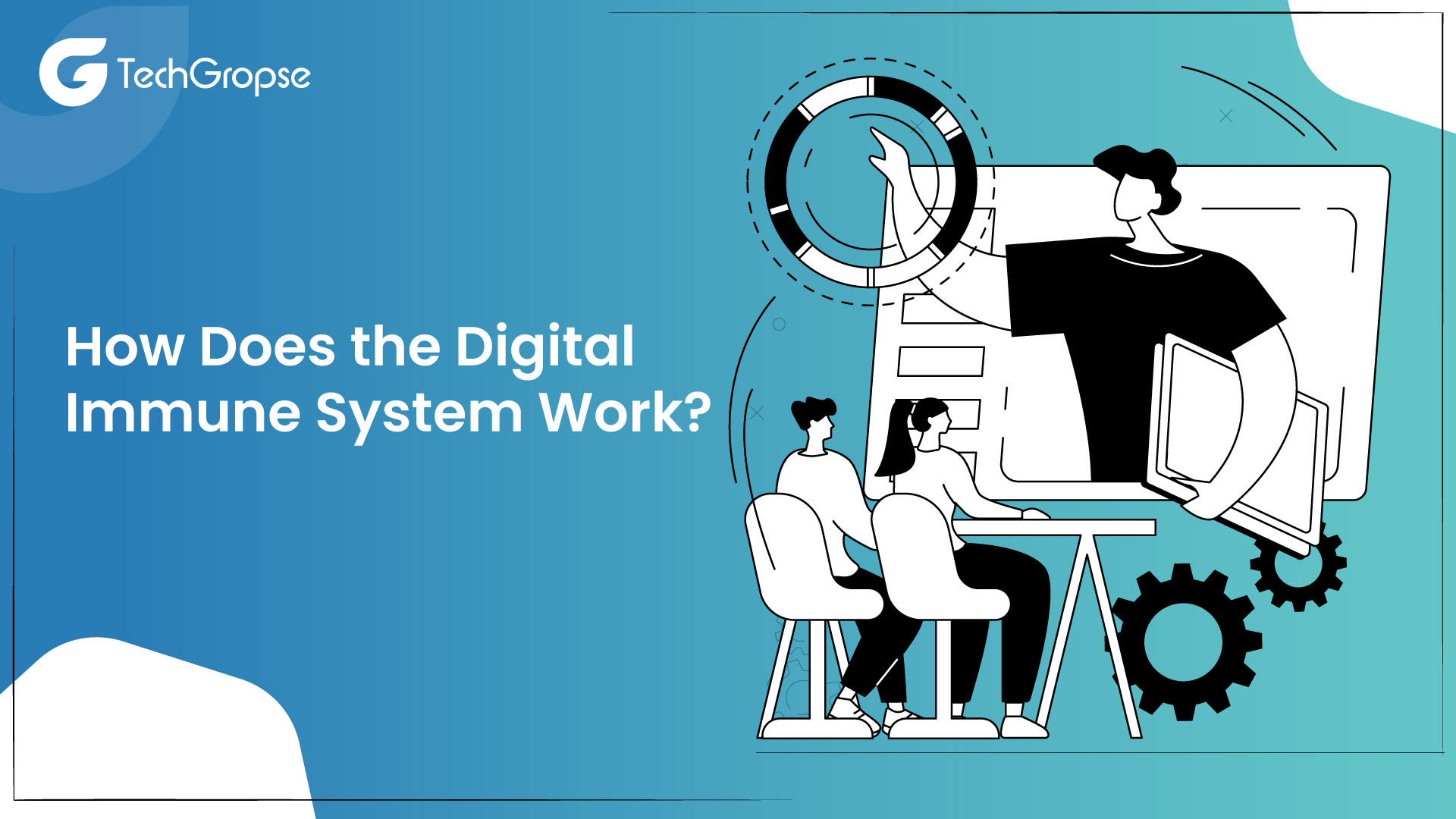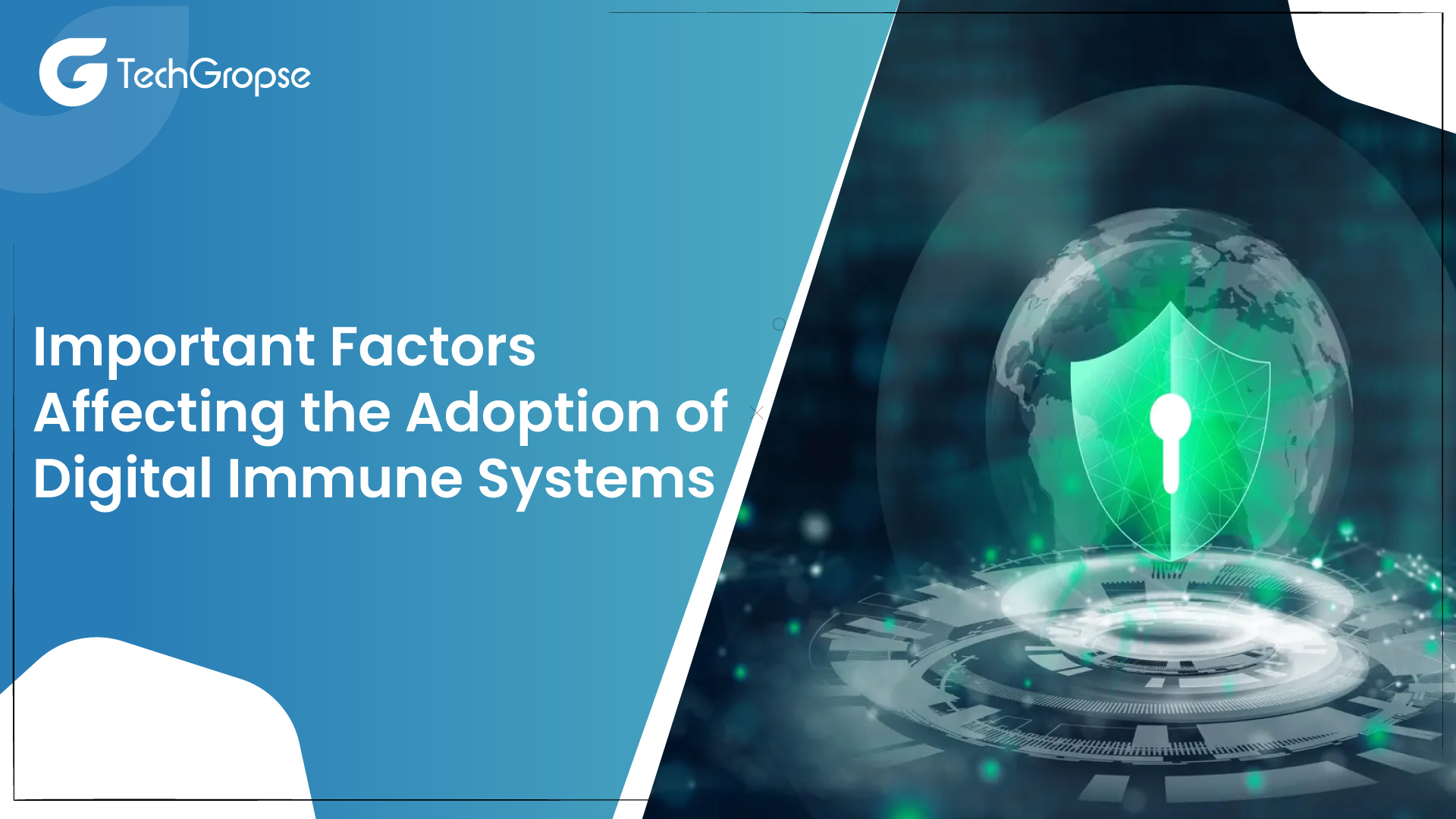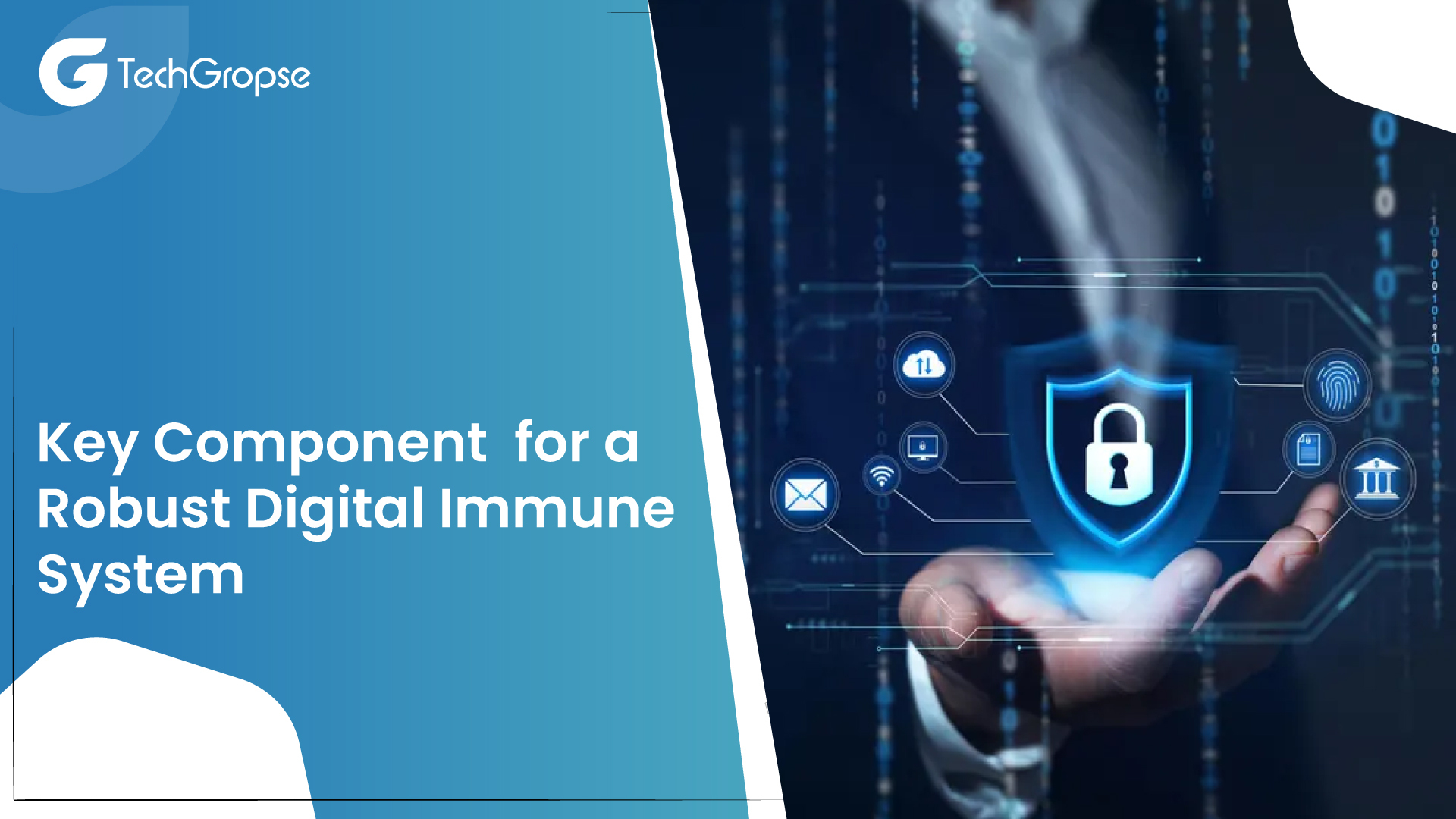The demand for technology is indeed increasing day to day in every industry. As the need for the technology is high, threats and attacks become common. In simple terms, if technology has significant advantages, it also has some drawbacks. Therefore, companies must possess a robust defense mechanism in today’s digital world. In order to protect your site and application, you can trust in the digital immune system. It gained more popularity across various industries.
You know that in 2022, the global digital immune system reached a value of $17.6 billion, and the most remarkable is its project growth, which is estimated to skyrocket to $50 billion by 2030. As a result, it is good to use a digital immune system to protect the business’s cybersecurity strategy. In today’s blog, we will explore this topic and its powerful shield capabilities. We also discuss its core principle and real-world digital immune system examples in order to understand how this innovative defense mechanism fights against cyber-attacks for your business.
What is the Digital Immune System?
The digital immune system is a collection of technologies. Procedures and protocols are built to defend digital systems, data, and frameworks from internet threats, including malware, viruses, phishing scams, and other cyber attacks. In simple terms, it is similar to the human immune system in that it relies on numerous layers of protection, antivirus software, firewalls, intrusion detection and prevention systems, and security awareness training.
Detecting and dealing with emerging risks always require constant monitoring, incident response, and threat intelligence. Therefore, the digital immune system is more popular in order to fight against cyber attacks.
How Does the Digital Immune System Work?

The digital immune system is generally composed of hardware and software components that cooperate to defend the digital strategy from online dangers. Below, we list out some essential elements of a digital immune framework:
1. Firewalls
In a digital immune system, firewalls are the first line of defense. These network security tools keep track of and filter incoming and outgoing traffic per pre-established rules. The best part of the framework is that it can block harmful communications in addition to preventing unauthorized access to a network or device.
Pre-established rules like allowing only trusted sources of communication, blocking malicious sites, and allowing traffic by user identity. Thus, looking for a digital immune system gartner is a good idea.
2. Intrusion Detection and Prevention System
IDPS is a computer programme that keeps an eye on network activity for indications of a cyberattack. They can identify new and emerging threats detect and prevent known attacks. It always includes a set of rules and signatures that define normal network behavior and identify known attack patterns.
3. Antivirus and Anti-Malware Software
Antivirus and anti-malware software are built to identify and get rid of unwanted software like worms, viruses, Trojan horses and spyware. To quarantine or remove them, they scan files and emails for dangerous content. As a result, there is a demand for a digital immune system to protect your site from cyber-attacks and data theft.
4. Multi-Factor Authentication
Prior to providing users access to a system or network, MFA needs users to submit many different forms of authentication. It can be something the user is like a security token, something they have, such as a password, or something they know, like a fingerprint.
Benefits of a Digital Immune System for Business
In the digital world’s fast-paced and ever-evolving landscape, businesses face many challenges, from cyber attacks to data threats. As our bodies rely on a robust immune system to fight against health-related issues, enterprises require a digital immune system to protect themselves online. Here we list out some essential advantages of implementing a digital immune system for your business:
- Cybersecurity Fortification
The digital immune system works as a powerful shield against cyber threats. With increasing frequency and sophistication of cyberattacks, companies require a comprehensive defense mechanism. It will include intrusion detection systems, firewalls, antivirus software working in tandem to recognize and neutralize potential threats.
By fortifying the digital infrastructure, users are able to defend against cybercriminals probing unauthorized access or attempting to exploit vulnerabilities. You can also say to your mobile app development company that they use a digital immune system to project data threats.
- Early Threat Detection
Just like the body’s immune system, digital immune systems can identify potential threats before they escalate. Advanced analytics and threat intelligence tools continuously monitor network activities, flagging any unusual patterns of behavior. Early detection of cybercrime allows businesses to respond instantly, minimizing potential damage and reducing the likelihood of successful attacks.
- Data Integrity and Privacy Protection
In today’s time, businesses handle vast amounts of sensitive data, from customer information to proprietary research. The digital immune system ensures the integrity and privacy of this data. Encryption techniques, access control and data loss prevention measures work together in order to safeguard information from unauthorized access or tampering. It will protect your business from legal repercussions and always fosters trust among customers and partners.
- Business Continuity Assurance
The robust digital immune system is integral to a comprehensive business continuity plan. In a cyber incident or a natural disaster, the device ensures that critical business operations can continue without significant disruption. It may include regular data backups, redundant systems and well-defined incident response plans. By preparing for the unexpected, companies can maintain operations and minimize the financial impact of unforeseen events.
- Regulatory Compliance Adherence
There are many industries that are subject to strict regulatory frameworks regarding data protection and cybersecurity. The digital immune system assists organizations to stay compliant with these regulations. By implementing, companies can avoid hefty fines and legal consequences by implementing security measures that align with industry standards and legal needs. Apart from this, demonstrating a commitment to cybersecurity can augment the reputation and credibility of customers and stakeholders.
- Adaptability to Emerging Threats
You know that the digital immune system is not static; it evolves in order to address the latest cybersecurity challenges. Regular updates and continuous patches ensure that your defenses remain effective against growing in terms of tactics and technologies. Thus, you have to ensure that the Android app development company will implement a digital immune system to ensure that cybercriminals are enabled to access the site.
Important Factors Affecting the Adoption of Digital Immune Systems

Adopting a digital immune system is critical in today’s connected, technology-driven world. This system acts as a defense mechanism against various cyber threats and ensures the health and security of the entire digital environment. Below, we list out the essential factors affecting the adoption of a digital immune system:
1. Cyber Threat Landscape
The evolving cyber threat landscape is a key factor driving the adoption of a robust digital immune system. As cyber threats become more sophisticated and diverse, companies are being forced to strengthen their cybersecurity measures. The rise in ransomware, data breaches, and other malicious activity highlights the importance of an adaptive digital immune system that can detect and protect against emerging threats. The level of threat complexity directly impacts the urgency and priority of implementing advanced digital immune defenses.
2. Compliance with Legal regulations
Legal framework conditions and compliance requirements significantly impact the implementation of digital immune systems. Industries such as finance, healthcare, and critical infrastructure are subject to strict regulations to protect sensitive data. Compliance standards such as GDPR, HIPAA, etc., require robust cybersecurity measures. Businesses are motivated to deploy digital immune systems to protect against cyber threats, ensure compliance with regulatory requirements, and avoid potential legal and financial repercussions.
3. Technological Advancement
The rapid pace of technological advancement is shaping and will be shaped by the introduction of digital immune systems. As new technologies such as artificial intelligence, machine learning, and quantum computing emerge, businesses must adapt their defenses accordingly.
Innovative technologies can be used to improve the capabilities of the digital immune system, providing proactive threat detection, real-time analysis, and adaptive response mechanisms. Integrating cutting-edge technology is key in the ongoing arms race between cyber attackers and defenders.
4. Organizational Culture and Awareness
Organizational culture and cybersecurity awareness play a critical role in the successful implementation of a digital immune system. A culture that values cybersecurity awareness and practices fosters a proactive approach to digital defense. Employee education and training programs can help develop an alert workforce that can identify and respond to potential threats. The human factor is often the weak link in cybersecurity, and organizations that prioritize a security-focused culture are better able to implement and maintain an effective digital immune system.
5. Resource Allocation and Budget Constraints
Resource allocation is a key factor influencing the adoption of digital immune systems, both in terms of budget and expertise. Organizations with limited resources can face challenges in implementing comprehensive cybersecurity measures. The cost of acquiring, deploying, and maintaining an advanced digital immune system may be a barrier for some companies. Strategic resource allocation, budget planning, and investment in cybersecurity talent are essential considerations for organizations looking to build resilient defenses against digital threats.
Key Component for a Robust Digital Immune System

When deciding to prevent cyber threats and attacks, beginning with a clear vision statement is necessary. It will ensure the business is protected. Moreover, to enhance security measures, the listed digital immune system best practices and technologies should be considered:
- Observability
It plays a vital role in closely examining software and systems. Integrating observability into apps it easier to get the required information that enhances reliability, resilience, and user experience.
- AI-augmented Testing
AI-augmented testing devalues the requirement for human intervention in software testing and complements traditional test automation. It enables automated creation, maintenance, planning, and analysis of tests.
- Chaos Engineering
An approach involving experimental testing is used to identify vulnerabilities and weaknesses within complex systems. Using this method, it is possible to ensure the pre-production environment’s security while offering valuable insights for enhancing regular operations and bolstering production stability.
- Auto Remediation
It works like a digital superhero that fixes issues without waiting for a human signal. It automates the troubleshooting and resolution procedure in response to detected problems. The best thing about this is that it, armed with predefined rules and scripts, can swiftly identify and resolve common problems, reducing downtime and minimizing manual intervention.
- Site Reliability Engineering
SRE ensures that websites and apps run smoothly, efficiently, and with minimal downtime. It embraces automation, using code to manage complex systems and respond to issues proactively. It focuses on aspects such as monitoring, incident response, capacity planning, applying an engineering mindset to the traditionally operational domain. Software supply chain security involves:
- Safeguarding the entire procedure of distributing.
- Developing.
- Deploying software to ensure it remains free from vulnerabilities and malicious elements.
This security approach guards against potential threats such as tampering, unauthorized access, or injecting malicious code at any stage.
How Digital Immune Systems Protect Your Business Against Cyberattacks
In the vast and connected geography of the digital world, the concept of a digitally vulnerable system emerges as a critical guard against the ever-evolving pitfalls of cyberattacks. Just as the mortal body relies on its vulnerable system to identify and neutralize dangerous raiders, businesses need a robust and adaptive digital vulnerable system to guard their digital means. Then are five crucial points illustrating how a digital vulnerable system fortifies businesses in the realm of cybersecurity.
1. Visionary Trouble Discovery and Prevention
A digital vulnerable system operates on the principle of visionary trouble discovery and forestallment. It employs advanced technologies similar to artificial intelligence and machine literacy to dissect vast quantities of data in real time. It can identify unusual patterns or actions that may indicate implicit cyber trouble by continuously covering network business, system logs, and stoner conditioning. This visionary approach allows the system to baffle attacks before they can exploit vulnerabilities and induce damage.
2. Adaptive and Learning Capabilities
Importantly, like the mortal, vulnerable system adapts to new strains of contagions, a digitally vulnerable system possesses adaptive and literacy capabilities; it evolves alongside the ever-changing trouble geography, constantly streamlining its knowledge base to fete arising pitfalls and attack vectors. This rigidity is pivotal in the face of sophisticated cyber adversaries who always introduce and concoct new styles to transgress security. The system learns from once incidents, refines its algorithms, and becomes more complete at fetching and negativing new pitfalls over time.
3. Incident Response and Mitigation
A digital vulnerable system is equipped with a robust incident response medium. In the event of a detected trouble, it fleetly initiates a coordinated response to contain and alleviate the impact. This may involve segregating affected systems, shutting down compromised accounts, or applying patches to address vulnerabilities. The system’s capability to respond fleetly is necessary for minimizing time-out and precluding the side movement of bushwhackers within the network. Likewise, it ensures that assignments learned from each incident contribute to the system’s overall adaptability.
4. Supply Chain Security and Risk Management
Feting that the digital ecosystem extends beyond the boundaries of a single association, a digital vulnerable system also addresses force chain security. It scrutinizes third-party software, services, and integrations for implicit vulnerabilities or negotiations. By assessing the security posture of all factors within the force chain, the system reduces the threat of vicious actors exploiting weak links to insinuate the association. This holistic approach to threat operation enhances the overall adaptability of the business, admitting that security is only as strong as its weakest link.
5. Nonstop Monitoring and Compliance
A robust, vulnerable digital system enforces nonstop monitoring and compliance with security programs and norms. It ensures all systems, operations, and biases are cleaved to established security protocols. By constantly assessing the association’s security posture against nonsupervisory conditions and assiduity stylish practices, the system helps maintain a visionary defense station. Compliance with norms similar to GDPR, HIPAA, or ISO 27001 becomes an integral part of the digital vulnerable system’s strategy, securing against external pitfalls and icing internal practices aligned with global security norms.
The Last Note
In this digital world, we see thousands of reports against cyberattacks. As a result, it is necessary to shield your business by implementing a digital immune system. This is generally a vulnerable system that helps to identify and neutralize dangerous raiders; businesses need a robust and adaptive vulnerable digital system to guard their digital means.
Thus, it is good to implement it in your business. You can also search for a software development company that can help you implement it in your business. You can also build your immunity system. However, you must hire dedicated developers with good knowledge and experience.
FAQs
1. What is the digital immune system?
The digital immune system is a cybersecurity concept inspired by the human immune system. It is a proactive and adaptive approach to combating cyber threats that uses technologies such as AI and machine learning to detect and neutralize potential attacks.
2. How is a digital immune system different from traditional cybersecurity measures?
A digital immune system is proactive, unlike traditional approaches focusing on reactive measures. It continuously learns and adapts to new threats, providing dynamic defense mechanisms rather than relying solely on predefined rules.
3. What technologies are commonly used in digital immune systems?
Artificial intelligence, machine learning, advanced analytics, and automation are critical technologies in digital immune systems. These enable rapid threat detection, continuous learning, and adaptive response to evolving cyber threats.
4. Can the digital immune system prevent zero-day attacks?
While no system can guarantee absolute protection against zero-day attacks, the digital immune system’s proactive nature and machine-learning capabilities make it possible. This greatly improves our ability to detect and prevent such threats before they can cause harm.
5. How does a digital immune system contribute to incident response?
Digital immune systems optimize incident response by automatically taking actions to contain and mitigate threats. This includes isolating affected systems, applying patches, and taking corrective actions to minimize the impact of the security incident.









